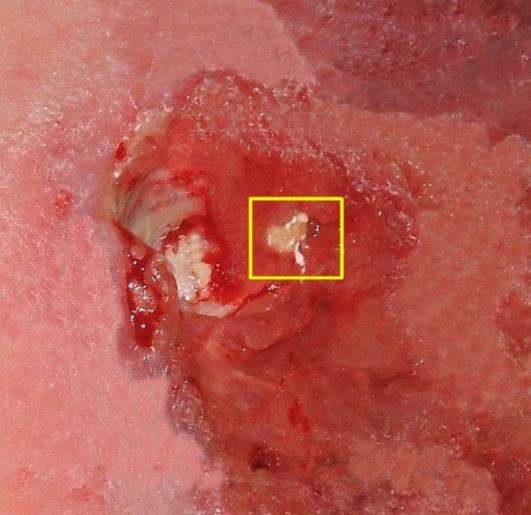The US Food and Drug Administration (FDA) has granted de novo marketing authorization for Bruin Biometrics' SEM Scanner, a wireless handheld device for use as an adjunct to the standard of care while evaluating patients with increased risk of pressure ulcers.

Image: Bruin Biometrics secures permission from FDA to sell SEM Scanner. Photo: Courtesy of Noles1984/Wikipedia.org.
Bruin Biometrics claims that its SEM Scanner is the first FDA-authorized device that can alert clinicians to specific anatomical areas of a patient’s body for increased risk of developing pressure damage.
The scanner can be used for assessing patients, before visible damage can manifest at skin surface.
Presently, clinical decision making relies on assessing patient’s overall risk for pressure ulcer development, with further subjective assessment of skin and tissue. These methods claims to suffer from not being able to direct clinicians to where the risk is building until damage is visible at the skin’s surface.
After the pressure injuries (also known as pressure ulcers, or bed sores) are visible on the skin surface, tissue damage had already been occurred.
Bruin; SEM scanner offers readings that provide objective clinical information that directs clinicians to heels and sacrums at risk of developing pressure ulcers, even before the damage is visible on the skin.
The data can help in providing anatomically specific interventions designed to reverse the damaging effects of pressure and shear and can prevent pressure injuries from developing further.
The company stated that in the US alone, more than 2.5 million people annually develop bed sores. This includes nearly one out of 10 patients in hospitals and almost a third of patients in long-term acute care.
The injuries that result from pressure and shear can cause localized damage to the skin and underlying tissue, typically at areas of bony prominence, such as the heels and sacrum.
The FDA has given marketing authorization for the SEM Scanner under its de novo review process for new low- to moderate-risk devices. These are such devices that are not substantially equivalent to an already legally marketed device.
The company said that its SEM Scanner secured European CE Mark approval in 2014 and Health Canada clearance in 2016 and is in full commercial use in Canada and the European Union.
Bruin Biometrics CEO Martin Burns said: “Our singular objective is to reduce pressure injury incidence by helping clinicians make prevention real. Total prevention of avoidable pressure injuries is mathematically impossible under the current standard of care. Prevention success demands objective, early, anatomically specific data. For the first time, clinicians will have access to anatomically specific risk assessment data that can be gathered from increased risk patients in all care settings.
“We are optimistic of the impact these data will have on prevention strategies here in the USA. With this FDA decision, wound prevention has finally caught up with other areas of healthcare that have long benefited from medical technologies.”
